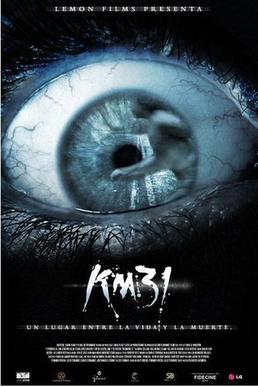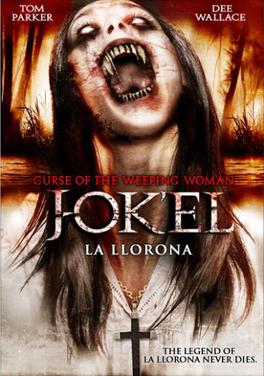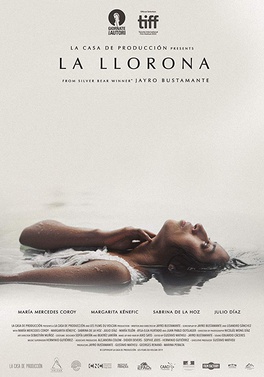
La Llorona is a vengeful ghost in Mexican folklore who is said to roam near bodies of water mourning her children whom she drowned in a jealous rage after discovering her husband was unfaithful to her. Whoever hears her crying either suffers misfortune or death and their life becomes unsuccessful in every field.

A curandero is a traditional native healer or shaman found primarily in Latin America and also in the United States. A curandero is a specialist in traditional medicine whose practice can either contrast with or supplement that of a practitioner of Western medicine. A curandero is claimed to administer shamanistic and spiritistic remedies for mental, emotional, physical and spiritual illnesses. Some curanderos, such as Don Pedrito, the Healer of Los Olmos, make use of simple herbs, waters, or mud to allegedly effect their cures. Others add Catholic elements, such as holy water and pictures of saints; San Martin de Porres for example is heavily employed within Peruvian curanderismo. The use of Catholic prayers and other borrowings and lendings is often found alongside native religious elements. Many curanderos emphasize their native spirituality in healing while being practicing Catholics. Still others, such as Maria Sabina, employ hallucinogenic media and many others use a combination of methods. Most of the concepts related to curanderismo are Spanish words, often with medieval, vernacular definitions.

Rudolfo Anaya was an American author. Noted for his 1972 novel Bless Me, Ultima, Anaya was considered one of the founders of the canon of contemporary Chicano and New Mexican literature. The themes and cultural references of the novel, which were uncommon at the time of its publication, had a lasting impression on fellow Latino writers. It was subsequently adapted into a film and an opera.

Brain Blockers is a 2007 horror film directed by Lincoln Kupchak. Edwin Craig plays a professor who experiments on his college students and turns them into zombies.
Horror films in Mexico form part of cinematic arts and culture of Mexico.

Kilometer 31 is a 2006 Mexican supernatural horror film, written and directed by Rigoberto Castañeda. The film is inspired by the Crying Woman legend and legends about highway ghosts.

The Curse of the Crying Woman is a 1961 Mexican horror film, directed by Rafael Baledón. In the film, married couple Amelia and Jaime travel to an old country house owned by Amelia's aunt Selma, who practices black magic. Selma tries to use her niece in order to resurrect "la llorona", an ancient specter.

La Llorona is a 1960 Mexican film directed by René Cardona. Based on the tale of La Llorona, it tells of a family that is cursed by the evil spirit of Luisa, this story's "weeping woman". The film was filmed on location in Guanajuato, Mexico.
La Llorona is an oral legend in Latin American folklore.

There are extensive and varied beliefs in ghosts in Mexican culture. In Mexico, the beliefs of the Maya, Nahua, Purépecha; and other indigenous groups in a supernatural world has survived and evolved, combined with the Catholic beliefs of the Spanish. The Day of the Dead incorporates pre-Columbian beliefs with Christian elements. Mexican literature and cinema include many stories of ghosts interacting with the living.

Wrestlemaniac is a 2006 American slasher film written and directed by Jesse Baget and starring Rey Misterio Sr.

J-ok'el is a 2007 Mexican supernatural horror film directed by Benjamin Williams. This film was Williams' debut.
Legend Quest: The Legend of La Llorona is a Mexican animated horror adventure comedy film based on the legend of La Llorona. The second installment of the Leyendas film saga, it is a sequel to La Leyenda de la Nahuala, which was a box-office success.

"La Llorona" is a Mexican folk song derived from the legend of La Llorona. There are many versions of the song. Its origins are obscure, but, around 1941, composer Andres Henestrosa mentioned hearing the song in the Isthmus of Tehuantepec. He popularized the song and may have added to the existing verses.
The Living Coffin is a 1959 Mexican Western horror film focusing on a ranch haunted by evil spirits. It incorporates the story of La Llorona.
"La Llorona" is the 9th episode of the second season of the supernatural drama television series Grimm, which premiered on October 26, 2012, on NBC. The episode was written by Akela Cooper, and was directed by Holly Dale.
La Llorona is a 1933 Mexican supernatural horror film directed by Ramón Peón, written by Fernando de Fuentes and Carlos Noriega Hope, and stars Ramón Pereda, Virginia Zurí, Adriana Lamar and Carlos Orellana. It was the first Mexican horror film with sound.

The Curse of La Llorona is a 2019 American supernatural horror film directed by Michael Chaves, in his feature directorial debut, and written by Mikki Daughtry and Tobias Iaconis. Based on the Latin American folklore of La Llorona, the film stars Linda Cardellini, Raymond Cruz, and Patricia Velásquez, and follows a mother in 1973 Los Angeles who must save her children from a malevolent spirit trying to steal them. The film was produced by James Wan through his Atomic Monster banner and, though not considered an installment in the franchise, takes place within The Conjuring Universe.

Mexican-American folklore refers to the tales and history of Chicano people who live in the United States.

La Llorona, also known as The Weeping Woman, is a 2019 Guatemalan horror film directed by Jayro Bustamante.













